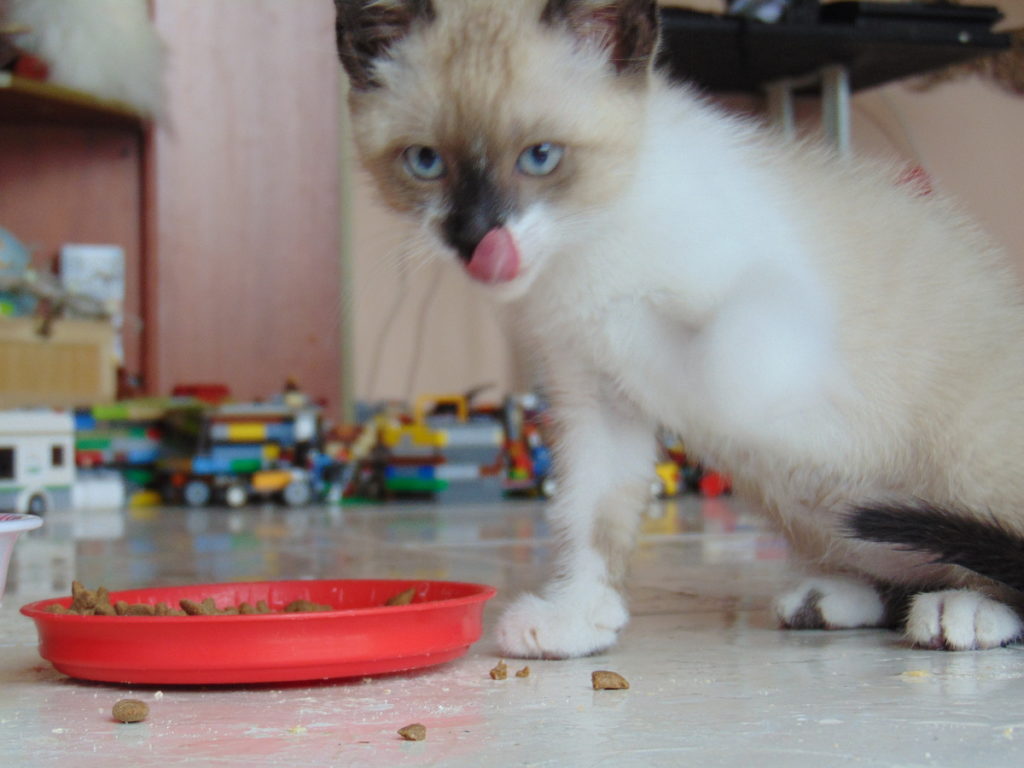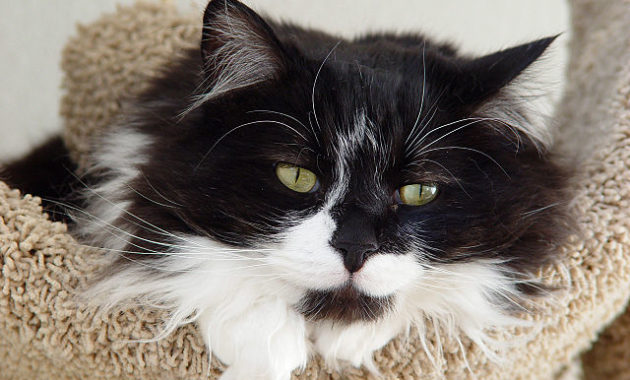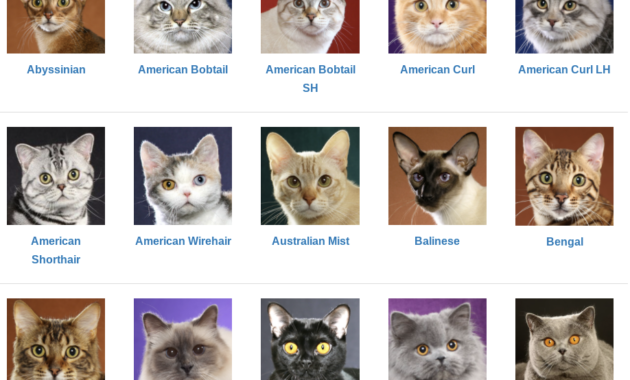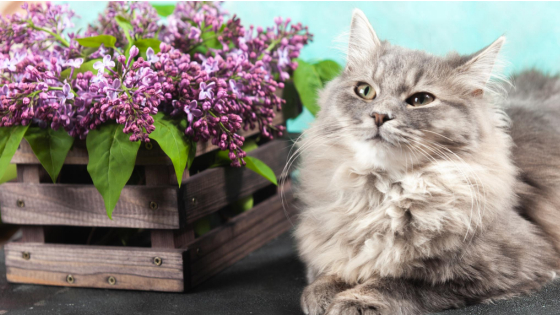The age-old debate surrounding cats and chocolate consumption continues to intrigue pet owners worldwide. While the allure of sharing a sweet treat with our feline companions may seem harmless, experts unanimously caution against this indulgence.
The inherent dangers lurking within chocolate, particularly theobromine and caffeine, present a formidable risk to cats, casting a shadow over the possibility of a feline-friendly chocolate festivity. As we navigate the fine line between pampering our pets and safeguarding their health, a deeper exploration into the intricacies of chocolate toxicity in cats unveils a complex tapestry of risks and considerations that warrant our undivided attention.
Key Takeaways
- Chocolate is toxic to cats due to theobromine and caffeine.
- Symptoms of chocolate poisoning in cats range from vomiting to seizures.
- Cats lack efficient enzymes to metabolize theobromine, increasing toxicity.
- Immediate veterinary help is crucial if a cat ingests chocolate for better recovery chances.
Chocolate Toxicity in Cats
Chocolate toxicity in cats poses a significant health risk due to the presence of theobromine and caffeine, toxic substances that can lead to severe health complications and even death. Cats lack efficient enzymes for theobromine metabolism, making them particularly vulnerable to chocolate poisoning.
The absorption of these stimulants from the gastrointestinal tract can result in heart problems, central nervous system dysfunction, and potentially fatal outcomes. The toxicity levels vary depending on the type of chocolate ingested, with dry cocoa powder, semisweet, and dark chocolate posing higher risks compared to white chocolate.
Understanding these risks is crucial for cat owners to prevent accidental exposure and ensure the well-being of their feline companions.
Symptoms of Poisoning
The ingestion of toxic substances in cats can manifest through a range of symptoms that serve as crucial indicators of potential poisoning. Symptoms of chocolate poisoning in cats may include vomiting, diarrhea, restlessness, hyperactivity, increased drinking, bloating, impaired balance, muscle rigidity, tremors, increased heart rate, and in severe cases, seizures, collapse, or even death.
It is essential for cat owners to be vigilant and monitor their feline companions for any unusual behavior or physical signs, especially if chocolate ingestion is suspected. Prompt recognition of these symptoms and seeking immediate veterinary assistance can significantly increase the chances of a positive outcome for the affected cat. Understanding these signs can help cat owners act swiftly to protect their pets' health and well-being.
Factors Influencing Toxicity Levels

Factors influencing the levels of toxicity in cats after ingesting chocolate can vary based on the type of chocolate consumed and the individual cat's weight and sensitivity.
- Type of Chocolate: Different types of chocolate contain varying levels of theobromine and caffeine, with dry cocoa powder, semisweet, and dark chocolate posing higher risks.
- Cat's Weight: Larger cats may tolerate chocolate better due to dilution of toxins in their body mass.
- Cat's Sensitivity: Some cats may be more sensitive to the effects of chocolate, experiencing toxicity symptoms at lower doses.
- Overall Health: Cats with pre-existing health conditions may be more susceptible to the toxic effects of chocolate due to compromised organ function.
Response to Ingestion
Upon detecting chocolate ingestion in cats, immediate veterinary assistance is crucial to mitigate potential toxicity risks and ensure timely treatment. Contacting a veterinarian or the ASPCA Animal Poison Control Center is paramount, even in the absence of visible symptoms.
The rapid progression of chocolate toxicosis in cats underscores the need for swift action. Prompt intervention not only increases the chances of recovery but also prevents the exacerbation of symptoms. Avoiding home remedies and seeking professional help are advised to address the ingestion effectively.
Understanding the severity of chocolate poisoning in felines and the lack of a specific antidote emphasizes the importance of timely and appropriate medical care in such situations.
Treatment for Poisoning
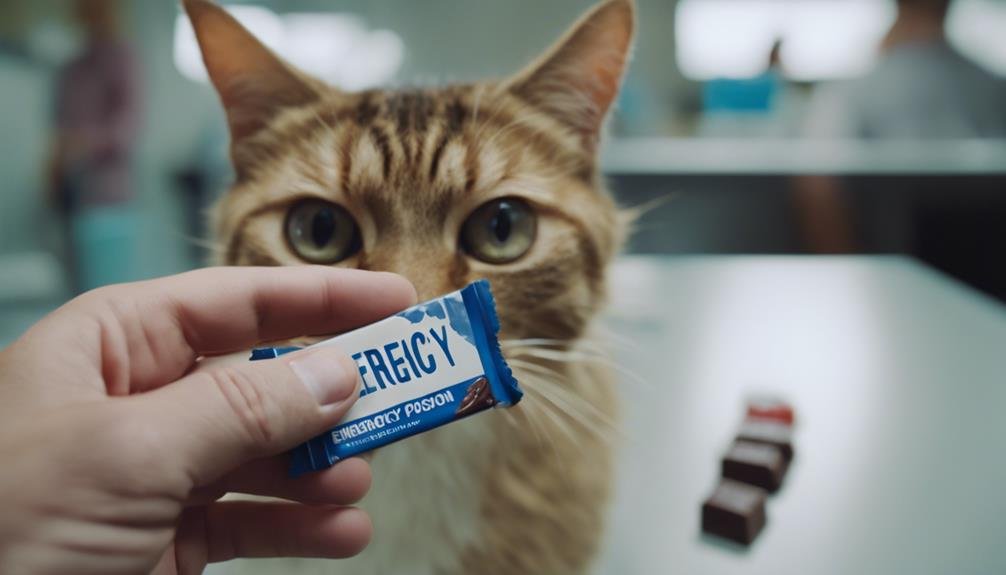
In addressing cases of chocolate poisoning in cats, prompt and tailored treatment plays a critical role in managing the ingestion's potential toxicity risks and ensuring the feline's well-being.
- Consult a Veterinarian: Seek professional guidance immediately.
- Stabilize Clinical Signs: Address symptoms like vomiting and restlessness.
- Induce Vomiting or Use Activated Charcoal: Help empty the stomach of toxic substances.
- Consider Hospitalization: In severe cases, continuous monitoring and supportive care may be necessary.
Safety Measures and Alternatives
When considering the well-being of feline companions, prioritizing safety measures and exploring alternative options is crucial in maintaining their health and happiness. To ensure your cat's safety, always store chocolate securely out of reach and opt for pet-friendly treats.
Instead of chocolate, consider offering cat-safe alternatives such as small pieces of cooked meat or fish as occasional treats. Additionally, engaging your cat in interactive play sessions or providing puzzle toys can offer mental stimulation and reward without the risks associated with chocolate consumption.
Conclusion
In the intricate dance of feline nutrition, the shadow of chocolate looms large, a dark temptation that beckons but must be resisted. Like a forbidden fruit, its toxic allure threatens the delicate balance of our beloved cats' well-being.
By heeding the warnings and staying vigilant against the dangers that lurk within, we can ensure that our feline companions tread safely on the path of good health, guided by the light of informed choices and responsible care.

